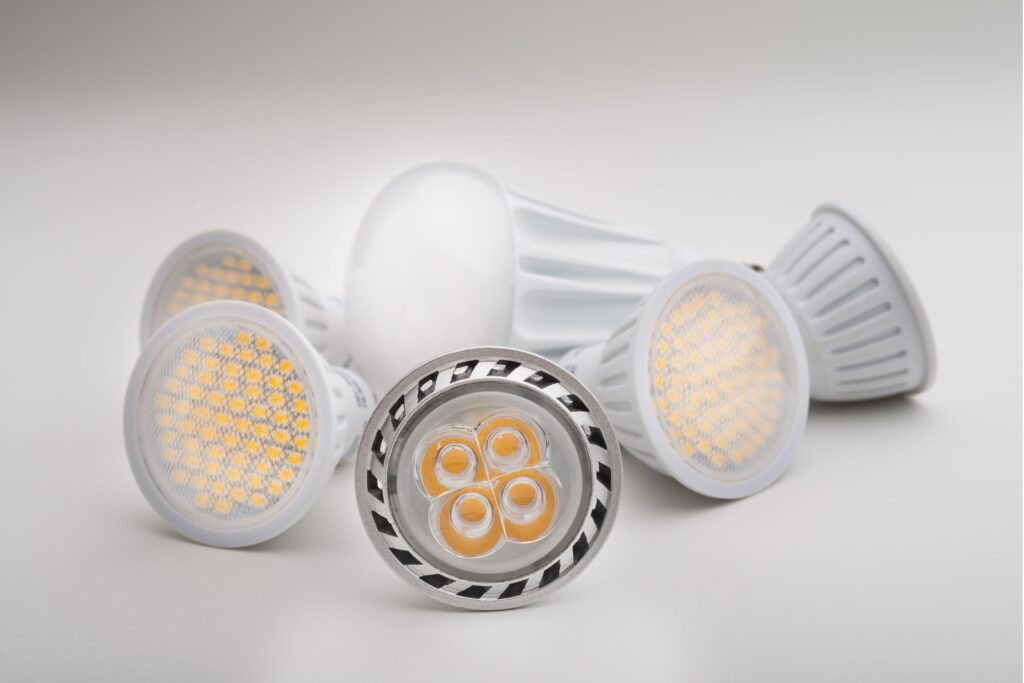
When it comes to the world of transportation, safety and visibility are paramount. In this regard, semi truck LED lights have emerged as a revolutionary solution, providing enhanced illumination and improved visibility on the road.
Equipped with advanced technology and superior performance, these lights have become a staple in the trucking industry. This article delves into the world of semi truck LED lights, exploring their definition, purpose, and the significance they hold in ensuring safety on our highways.
A Radiant Revolution
Semi truck LED lights refer to lighting fixtures that utilize Light Emitting Diodes (LEDs) as their primary light source. Unlike traditional incandescent bulbs that rely on heating a wire filament to produce light, LEDs work through electroluminescence—a process where light is emitted when current passes through a semiconductor material. This innovative technology not only offers immense benefits in terms of efficiency but also elevates the standards of safety and visibility for trucks.
Illuminating Purpose
The purpose of semi truck LED lights goes far beyond mere illumination; they play a crucial role in ensuring safety and mitigating risks associated with driving large commercial vehicles on the road. These powerful lighting systems are designed to enhance visibility for both the driver behind the wheel and other motorists sharing the road. By illuminating the surroundings effectively, they reduce blind spots and enable drivers to gauge distances accurately.
Moreover, semi truck LED lights promote safer driving during adverse weather conditions such as rain or fog when visibility is significantly reduced. The bright beams emitted by these advanced lighting solutions pierce through dense mist or heavy raindrops with exceptional clarity—an indispensable feature for long-haul truckers who face varying weather conditions throughout their journeys.
Overview of Semi Truck LED Lights

Using LED Lights in Semi Trucks
When it comes to illuminating the road ahead, LED lights have emerged as a game-changer for the trucking industry. The benefits they offer compared to traditional incandescent lights are numerous and significant. One of the key advantages of using LED lights in semi trucks is their exceptional energy efficiency, which translates into reduced fuel consumption.
LEDs convert a significantly higher percentage of electrical energy into light, while only a fraction is lost as heat. This efficiency helps truck drivers save on fuel costs, making them an economically viable choice for long hauls.
Long Lifespan and Durability
Semi truck owners and operators appreciate the longevity that LED lights bring to their vehicles. Unlike incandescent bulbs that often require frequent replacements due to burnout or breakage, LEDs boast an impressively long lifespan. With an expected operational life of up to 50,000 hours or more, LED lights can potentially outlast several traditional bulbs combined.
This extended lifespan not only reduces maintenance costs but also enhances the overall reliability and uptime of semi trucks. Furthermore, LEDs are renowned for their durability and resilience against harsh road conditions.
They are constructed with solid-state components that can withstand vibrations and shocks without compromising performance. This ruggedness ensures that semi truck LED lights remain functional even on rough terrains or during unpredictable weather conditions, providing drivers with peace of mind knowing they have reliable lighting at all times.
Brightness and Clarity for Enhanced Visibility
One cannot underestimate the importance of clear visibility on the road—especially when it comes to commercial vehicles like semi trucks. LED lights excel in this aspect by offering unparalleled brightness and clarity compared to traditional incandescent counterparts.
The diodes within an LED produce a concentrated beam that emits light uniformly across a wider area, resulting in enhanced visibility for both the truck driver and other road users. LED lights also have a higher color temperature, providing a more natural and vibrant light output.
This characteristic ensures that road signs, obstacles, and potential hazards are illuminated with utmost clarity, allowing truck drivers to react promptly and make informed decisions. In low-light conditions or adverse weather situations such as rain or fog, the superior lighting performance of LEDs becomes even more critical in preventing accidents and ensuring the safety of everyone on the road.
Comparison with Traditional Incandescent Lights
While LED lights clearly offer numerous advantages, it is essential to compare them directly with their traditional incandescent counterparts to truly appreciate their superiority. When it comes to energy consumption, LED lights are significantly more efficient than incandescent bulbs. Incandescent lights waste a substantial amount of energy as heat rather than converting it into usable light.
Conversely, LEDs convert almost all electrical energy into light while generating minimal heat emissions. Not only do LED lights consume less power when operational, but they also have a reduced environmental impact due to their lower energy demands.
In an era where sustainability is paramount, opting for LEDs can contribute to reducing carbon footprints within the trucking industry. Additionally, the long lifespan of LED lights greatly reduces waste by minimizing the frequency of replacements compared to short-lived incandescent bulbs.
Moreover, while initial costs for purchasing LED lights may be slightly higher than those for traditional bulbs upfront, their extended lifespan and lower maintenance requirements ultimately result in significant cost savings over time. Semi truck owners will spend less on replacements and labor associated with changing bulbs frequently—a considerable advantage that adds value to investing in high-quality LED lighting solutions for their vehicles.
Types of Semi Truck LED Lights

Headlights
When it comes to headlights, semi trucks have embraced the transition from traditional high-intensity discharge (HID) lights to more advanced LED headlights. LED headlights offer numerous advantages over HID lights, making them the preferred choice for many truckers. One of the key differences between the two is brightness.
LED headlights emit a brighter light, allowing for enhanced visibility on the road, especially during nighttime or adverse weather conditions. Additionally, LED headlights provide a superior color temperature that closely resembles natural daylight, reducing eye strain and improving overall clarity while driving.
Furthermore, LED headlights boast an extended lifespan compared to their HID counterparts. They are highly durable and resistant to vibrations, ensuring longevity even on rough terrains.
This durability not only reduces maintenance costs but also contributes to overall energy efficiency as less frequent replacements are required. Installing LED headlights in semi trucks is relatively straightforward due to their compact size and standardized fittings, making it easier for truck owners and drivers to make the switch.
Taillights

Semi truck taillights play a crucial role in signaling intentions and enhancing safety awareness for other drivers on the road. Sequential LED taillights have emerged as an innovative solution that offers significant advantages over traditional taillights.
In contrast to regular taillights that illuminate simultaneously, sequential LEDs light up progressively from one end of the tailgate to another when indicating turns or brake actions. One notable benefit of sequential LED taillights is their ability to grab attention more effectively than conventional taillights due to their unique lighting pattern.
This feature increases safety awareness among trailing vehicles by providing clearer indications of intended maneuvers by the truck driver ahead. Additionally, these advanced taillights offer customization options in terms of lighting sequences and patterns, allowing truck owners to add a touch of personalization while still prioritizing safety.
Marker Lights

Marker lights, also known as clearance lights, are a vital component of semi trucks, particularly during lane changes or turns. These lights are strategically positioned on the sides and corners of the vehicle to increase visibility and minimize blind spots for both the truck driver and other motorists sharing the road. Semi truck marker lights come in various colors, with amber being the most common color used for clearance purposes.
Different marker light colors serve specific functions and ensure compliance with regulations. For instance, red marker lights are used for indicating stop or brake actions, while white ones illuminate to indicate reverse movements.
By incorporating colored marker lights, semi trucks become more conspicuous on the road, promoting safer driving conditions for everyone. Reflectors are also often integrated into marker light designs to further enhance visibility during low-light situations and comply with regulations regarding reflectivity.
Regulations and Compliance Standards for Semi Truck LED Lights

Federal Motor Carrier Safety Administration (FMCSA) Guidelines
To ensure uniformity and safety standards across the industry, governing bodies such as the Federal Motor Carrier Safety Administration (FMCSA) have established guidelines relating to semi truck LED lights. These guidelines encompass various aspects such as color requirements, intensity levels, positioning specifications, and more. Truck owners must adhere to FMCSA guidelines that dictate specific color schemes for different types of lights on their vehicles.
For example, headlights should emit a white light while taillights typically employ red lighting. Additionally, these guidelines specify acceptable intensity levels to prevent excessive glare that may hinder other drivers’ vision.
Proper positioning of LED lights is crucial for optimum functionality as well as meeting regulatory requirements set by FMCSA. The correct placement ensures maximum visibility from different angles without obstructing essential components or impairing other drivers’ sightlines.
Non-compliance or improper use of LED lighting systems can have consequences ranging from fines and penalties to potential vehicle impoundment. Therefore, staying well-informed about FMCSA guidelines and abiding by them is not only essential for safety but also for avoiding legal complications.
Advanced Features in Semi Truck LED Lights

Adaptive Lighting Systems
As technology continues to advance, semi truck LED lights have become more sophisticated with the introduction of adaptive lighting systems. These systems utilize sensors and intelligent algorithms to automatically adjust the brightness and beam pattern based on environmental conditions, such as weather or ambient light levels.
The benefits of adaptive lighting systems are multifaceted. For example, during foggy or rainy conditions, the lights adapt by emitting a broader beam pattern with lower intensity to minimize glare and improve visibility without compromising safety.
Conversely, in well-lit areas or clear weather conditions, the system can increase brightness and adjust the beam pattern for enhanced clarity. By implementing adaptive lighting systems in semi trucks, drivers can focus more on their primary task of safe driving while knowing that their headlights are adapting intelligently to provide optimal visibility in various scenarios.
Conclusion
Semi truck LED lights have revolutionized the way vehicles illuminate the road. The transition from traditional incandescent lights to energy-efficient LEDs has brought about numerous advantages including enhanced brightness, longer lifespan, improved visibility through sequential taillights, and compliance with regulations through marker lights with different colors. Moreover, FMCSA guidelines ensure uniform standards across the industry while advanced features like adaptive lighting systems further enhance safety on our highways.
With these advancements in semi truck LED lights, drivers can feel confident knowing they have reliable illumination that contributes to both their own safety and that of others sharing the road. Embracing these advanced lighting technologies is a positive step toward a brighter future for transportation where accidents are reduced due to improved visibility and signaling capabilities.










